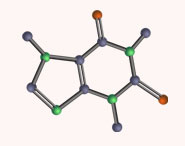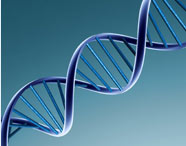


 علم الكيمياء
علم الكيمياء 
 الكيمياء التحليلية
الكيمياء التحليلية 
 الكيمياء الحياتية
الكيمياء الحياتية 
 الكيمياء العضوية
الكيمياء العضوية 
 الكيمياء الفيزيائية
الكيمياء الفيزيائية
 الكيمياء اللاعضوية
الكيمياء اللاعضوية 
 مواضيع اخرى في الكيمياء
مواضيع اخرى في الكيمياء
 الكيمياء الصناعية
الكيمياء الصناعية |
Read More
Date: 18-12-2020
Date: 25-9-2018
Date: 23-9-2018
|
The sum of the concentration term exponents in a rate law equation is known as its reaction order. We can also refer to the relationship for each reactant in terms of its exponent as an order.
For the following reaction between nitrogen dioxide and carbon monoxide:
NO2(g) + CO(g) → NO(g) + CO2(g)
The rate law is experimentally determined to be: rate = k[NO2]2
Therefore, we would say that the overall reaction order for this reaction is second-order (the sum of all exponents in the rate law is 2), but zero-order for [CO] and second-order for [NO2].
The reaction order is most often a whole number such as 0, 1, or 2; however, there are instances where the reaction order may be a fraction or even a negative value.
Earlier it was mentioned that the units of the rate constant depend on the order of the reaction. Let’s quickly examine why this occurs. A simplified rate law can be expressed generically in the following way:
Rate = k[reactant]y
Units of rate = (units of rate constant)(units of concentration)y
Units of rate constant = [latex] frac{Units of rate}{{(Units of concentration)}^y} [/latex] = [latex] frac{M/s}{M^y} [/latex]
Therefore, the units of the rate constant should be:
| Reaction Order | Units of rate constant |
| Zero-order | M s-1 |
| First-order | s-1 |
| Second-order | L mol-1 s-1 |



|
|
|
|
التوتر والسرطان.. علماء يحذرون من "صلة خطيرة"
|
|
|
|
|
|
|
مرآة السيارة: مدى دقة عكسها للصورة الصحيحة
|
|
|
|
|
|
|
نحو شراكة وطنية متكاملة.. الأمين العام للعتبة الحسينية يبحث مع وكيل وزارة الخارجية آفاق التعاون المؤسسي
|
|
|